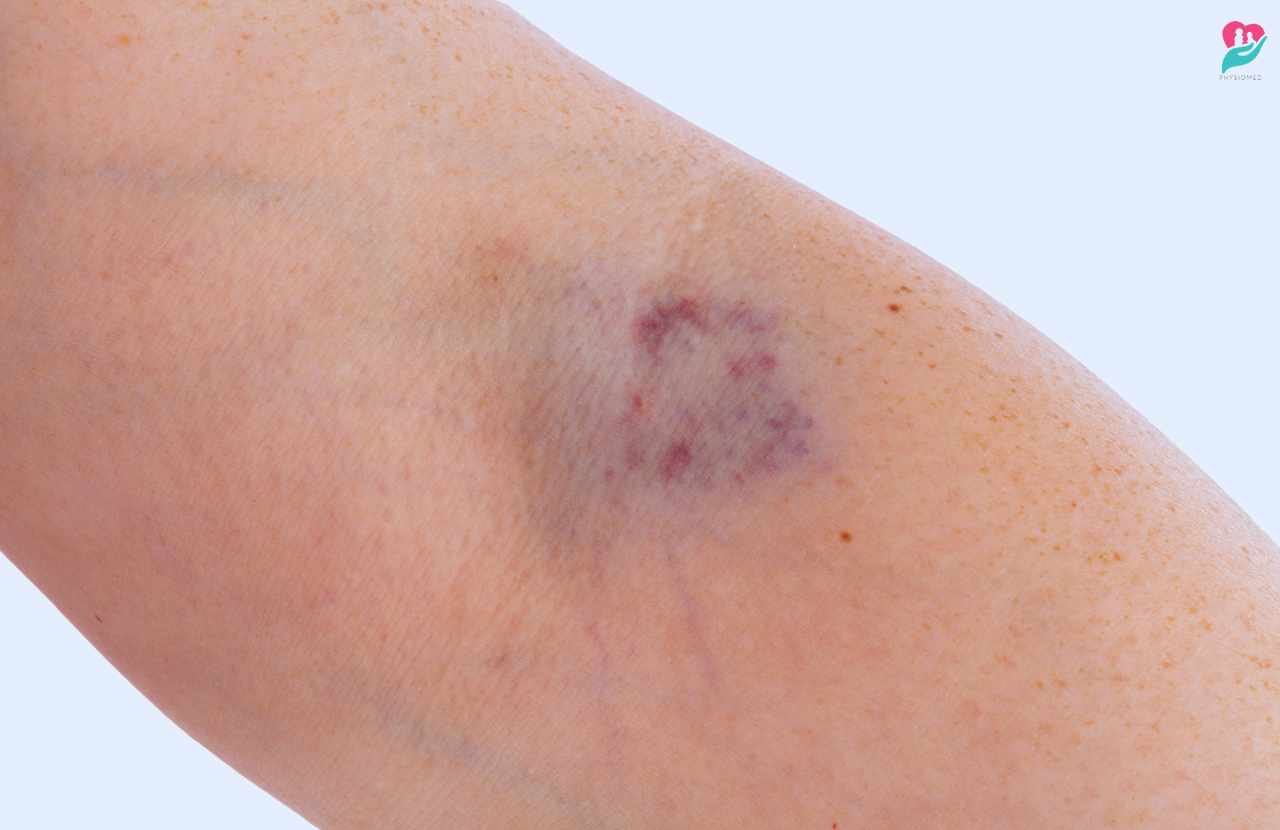To get rid of bruises from donating plasma, apply a cold compress and elevate the affected area for 24 hours. Donating plasma is a selfless act of kindness that helps save lives.
However, it can sometimes leave behind unwanted bruises. These bruises occur when the needle used to extract plasma causes small blood vessels under the skin to break, resulting in discoloration and tenderness. Although bruises are a normal part of the donation process, they can be unsightly and uncomfortable.
If you want to know how to get rid of bruises by donating plasma, read on for some helpful remedies that can speed up the healing process and alleviate the appearance of bruising.
What Causes Bruising After Donating Plasma
Donating plasma is a generous act that can save lives, but it can sometimes leave you with unwanted bruises. It’s important to understand the process of plasma donation and its effects on your body to minimize the risk of bruising.
During plasma donation, a needle is inserted into your vein to collect plasma, which is then separated from the red blood cells and returned to your body. This process can cause minor trauma to the blood vessels, leading to bruising.
Several factors can increase your risk of bruising, including:
- The size and location of the needle insertion
- Your body’s natural tendency to bruise
- The skill of the healthcare professional performing the donation
- Your medications or medical conditions that affect blood clotting
To minimize the risk of bruising, it is important to stay hydrated before and after donation, avoid taking blood-thinning medications prior to donation, and inform the healthcare professional about any medical conditions you have. Applying a cold compress to the donation site after the procedure can also help reduce bruising. If you do experience bruising, it will typically heal on its own within 1-2 weeks. However, if you have concerns or the bruise is severe, it is always best to consult a healthcare professional.
Tips To Minimize Bruising From Donating Plasma
Donating plasma is a selfless act that helps individuals in need, but it can sometimes result in bruises. To minimize bruising, follow these tips:
Stay hydrated before and after plasma donation
Drinking plenty of water helps keep your blood vessels hydrated and less prone to bruising.
Apply ice to the donation site
Immediately after donating plasma, apply an ice pack to the donation site for 15-20 minutes. This helps reduce inflammation and minimize bruising.
Avoid strenuous activities after donation
Engaging in heavy lifting or strenuous exercise can increase the risk of bruising. Take it easy for a day or two after donating plasma.
Take over-the-counter pain relievers, if necessary
Non-steroidal anti-inflammatory drugs (NSAIDs) such as ibuprofen can help alleviate any discomfort and reduce swelling.
Remember, everyone’s body reacts differently, and some bruising may still occur despite taking precautions. However, by following these tips, you can minimize the likelihood and severity of bruises after donating plasma.
Natural Remedies To Heal Bruises Post-Plasma Donation
If you’ve recently donated plasma and are experiencing bruises, there are a few natural remedies you can try to help speed up the healing process. One option is to apply **arnica gel or cream** directly to the affected area. Arnica is known for its anti-inflammatory properties and can help reduce swelling and bruising. Another remedy is to use a **witch hazel compress**. Witch hazel contains tannins, which can help constrict blood vessels and reduce the appearance of bruises. Consuming **foods rich in vitamin K** can also promote faster healing, as this vitamin plays a role in blood clotting. Lastly, applying a **warm compress** to the bruise can help improve blood circulation and aid in the healing process. Remember to consult with a healthcare professional before trying any new remedies.
When To Consult A Healthcare Professional
Bruises from donating plasma are a common side effect, but there are several ways to speed up the healing process and reduce their appearance. However, it is important to know when to consult a healthcare professional to ensure there are no underlying medical issues.
If you have severe bruises that last for an extended period, it is recommended that you seek medical advice. Additionally, it’s crucial to see a doctor if you experience other symptoms along with your bruises, such as excruciating pain, swelling, or infection.
Another indicator to consider is unexplained bruising, even if you have taken preventive measures. If you are consistently experiencing unexplained bruising despite avoiding injury or trauma, it is advisable to consult a healthcare professional to rule out any underlying health conditions.
Frequently Asked Questions For How To Get Rid Of Bruises From Donating Plasma
How Long Does Bruising Last After Donating Plasma?
Bruising after donating plasma usually lasts for about one to two weeks.
What Helps With Bruising After Plasma Donation?
To help with bruising after plasma donation, apply cold compresses and avoid strenuous activities.
Do Plasma Donation Marks Go Away?
Plasma donation marks typically fade over time and eventually go away.
Why Did I Bruise So Bad After Donating Plasma?
Donating plasma can cause bruising because needles may damage blood vessels during the process.
Conclusion
To wrap up, bruising after donating plasma is a common occurrence, but it doesn’t have to hinder your desire to help others. By following a few simple steps, you can minimize the appearance of bruises and potentially speed up the healing process.
Remember to apply a cold compress immediately after donation to reduce swelling, and gently massage the area to improve blood circulation. Arnica gel or cream can also be used to alleviate bruising. Additionally, it’s important to stay hydrated, as this promotes healthy blood flow and aids in healing.
While bruises can be unsightly, they are typically harmless and will fade naturally over time. If you’re concerned or experience persistent bruising, it’s always best to consult a healthcare professional. By taking care of yourself and implementing these tips, you can continue to make a difference through plasma donation without worrying about unsightly bruises.

